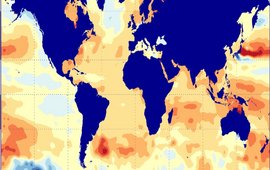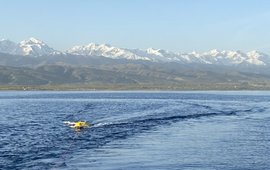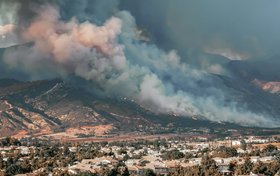The Earth gravity field including its temporal variations is a key parameter for understanding the system Earth. Dedicated gravity satellite missions such as CHAMP, GRACE, GOCE, GRACE-FO, or GRACE-C to a large extent developed, operated and analysed by Section 1.2, enable to study mass distribution and mass transport on various spatial and temporal scales. In addition, we use terrestrial gravimetric data and data obtained on ships or airplanes for regional evaluations or - in combination with satellite data and digital elevation models and density information - the calculation of high-resolution global gravity field models.
We use GNSS (Global Navigation Satellite System), DORIS (Doppler Orbitography and Radiopositioning Integrated by Satellite) and SLR (Satellite Laser Ranging) observations for precise orbit determination of various satellites which are important for our research. For this, we operate a SLR station that performs high-precision, absolute distance measurements to a variety of spacecraft in low, medium and high orbits. SLR observations to LAGEOS or LARES are used to determine the long-wavelength components of the gravity field. For the ILRS (International Laser Ranging Service) and the IDS (International DORIS Service), we regularly provide coordinates of the corresponding ground stations and Earth orientation parameters, thereby making a significant contribution to the continuous improvement of the International Terrestrial Reference Frame.
Furthermore, we evaluate historical and current altimetry satellite missions in order to derive the temporal changes in sea level on global and regional scales, e.g. at the coast lines. In this context, we operate and analyze a network of tide gauge stations and use GPS buoys on lake Issyk Kul (Kyrgyzstan). This allows us to validate the observations of the altimetry satellites, detect long-term changes in sea level and better estimate potential threats for human population in coastal regions.
As part of the GFZ Global Change Observatory we are contributing to the establishment and operation of a hydrometeorological and geodetic network in Central Asia. In combination with satellite altimetry, we use this information to monitor water resources and their changes due to climate change.
The various projects in our section are processed in four working groups:
- Development, operation and analysis of gravity field satellite missions
- Terrestrial and Airborne Gravimetry
- Earth System Parameters and Orbit Dynamics
- Geodetic Hazard Monitoring
The projects of working groups 1 and 3 are primarily and in close cooperation with the German Aerospace Center (DLR) executed at GFZ´s Branch Office in Oberpfaffenhofen.
Young Investigator Groups: Title of Young Inestigator Group: DFG Research Group NEROGRAV (New Refined Observations of Climate Change from Spaceborne Gravity Missions)
Spokesman: Prof. Dr. Frank Flechtner (Section 1.2, TU Berlin)
Participating Researchers: GFZ: Dr. Natalia Panafidina (Section 1.2), Dr. Henryk Dobslaw, Dr. Linus Shihora (Section 1.3); External: Dr. Denise Dettmering, Dr. Mike Hart-Davis (DGFI-TU Munich), Prof. Dr. Maik Thomas (Section 1.3, FU Berlin), Dr. Roman Sulzbach (FU Berlin), Prof. Dr. Michael Schindelegger, Prof. Dr. Petra Friederichs, Le Liu, Ziyu Liu, Dr. Anne Springer, Christian Mielke (University Bonn), Prof. Dr. Roland Pail, Dr. Thomas Gruber, Greg Kalimeris, Marius Schlaak (TU Munich), Dr. Michael Murböck (TU Berlin), Prof. Dr. Annette Eicker, Klara Middendorf (HafenCity University Hamburg)
Projects of Young Investigator Group in second phase:
- Improved Tidal Dynamics and Uncertainty Estimation for Satellite Gravimetry (TIDUS-2; PIs: Maik Thomas (FU Berlin), Denise Dettmering (DGFI – TU Munich))
- Atlantic Meridional Overturning Circulation: Inferences from Satellite Gravimetry and Numerical Ocean Models (AMOCING; PIs: Henryk Dobslaw (GFZ), Michael Schindelegger (University Bonn))
- High-Resolution Atmospheric-hydrological Background Modelling for GRACE/GRACE-FO – regional refinement and validation (HIRABAM-2; PIs: Petra Friederichs and Jürgen Kusche (University Bonn))
- Near-real time, Long-term, LRI and SLR combination aspects (NELOS; PIs: Natalia Panafidina (GFZ), Thomas Gruber (TU Munich))
- Optimized Space-Time Parameterization for GRACE and GRACE-FO data Analysis (OSTPAGA-2; PIs: Roland Pail (TU Munich), Frank Flechtner (TU Berlin)
- Climate Signals from GRACE/GRACE-FO and Next Generation Gravity Missions (CLISGY; PIs: Annette Eicker (HCU Hamburg), Roland Pail (TU Munich))
- 2023 | Award for knowledge transfer for members of Section 1.2 ‘Global Geomonitoring and Gravity Field’, 1.3 ‘Earth System Modelling’ and 4.4 ‘Hydrology’ for their activities for the timely creation of an information platform on the GRACE satellite missions
- 2021 | AIAA (American Institute of Aeronautics and Astronautics) International Cooperation Award “for outstanding leadership of the international consortium in the planning and implementation of the successful Earth gravity missions GRACE and GRACE-FO” | Frank Flechtner
- 2020 | Winner (Top 10) in the category “Physical Sciences” at the Falling Walls 2020 Conference, Berlin | Frank Flechtner
- Since 2019 | Fellow of the International Association of Geodesy (IAG) | Frank Flechtner
- 2019 | Ivan Mueller Award for “Distinguished Service and Leadership” from the Geodesy Section of the AGU | Frank Flechtner
- 2019 | NASA Outstanding Public Leadership Medal “for outstanding leadership of the GRACE-FO international partners resulting in successful launch and continuation of the 16 years record mapping Earth's gravity” | Frank Flechtner
- 2018 | NASA Outstanding Public Leadership Medal "for outstanding leadership of the European partner organizations and science team for the GRACE mission” | Frank Flechtner
All GFZ job offers
Possible doctoral and master's theses as well as all student internships offered at the GFZ can also be found under the link above.
The opportunities specifically offered in our section are listed separately below:
1. vacancies in our section
- Title: Postdoc position (f_m_x) – High resolution global gravity field modeling
- Reference Number: 10251

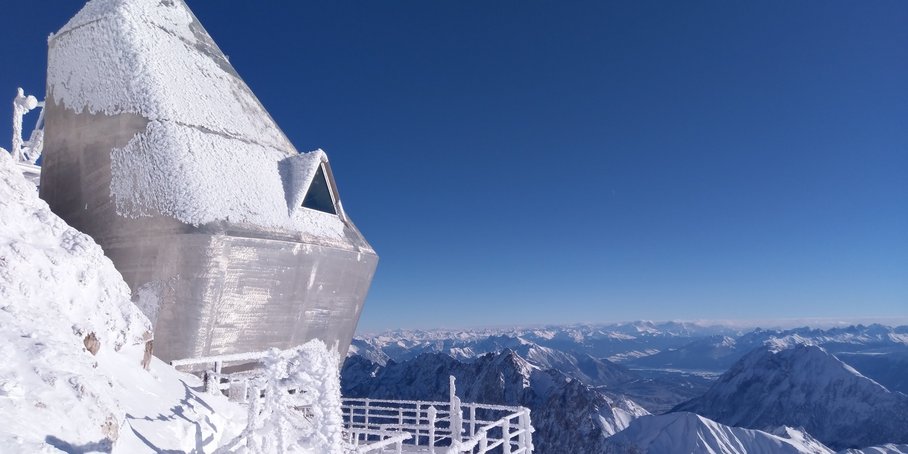
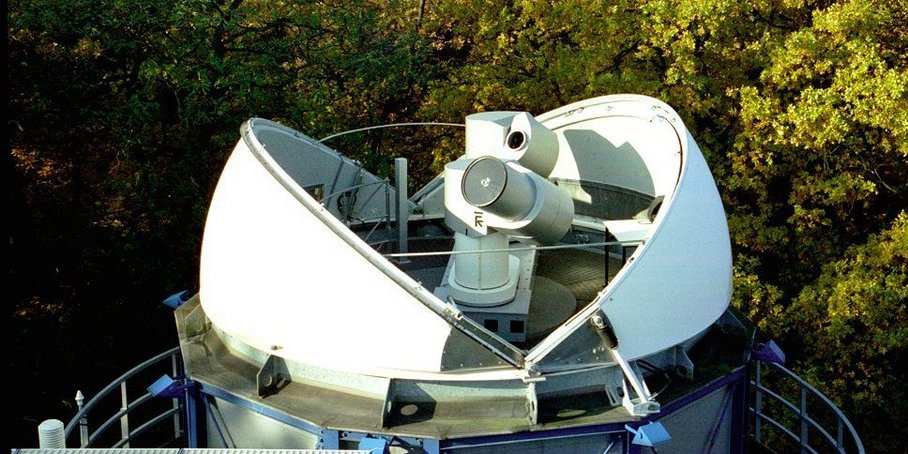
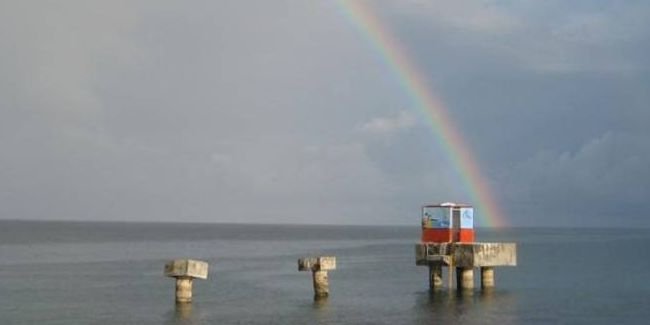

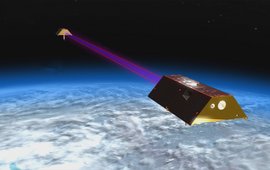

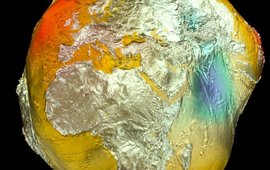
![[Translate to English:] The picture shows the laser station in night mode.](/fileadmin/_processed_/7/3/csm_laserstation_2_2eaec2565c.jpeg)

